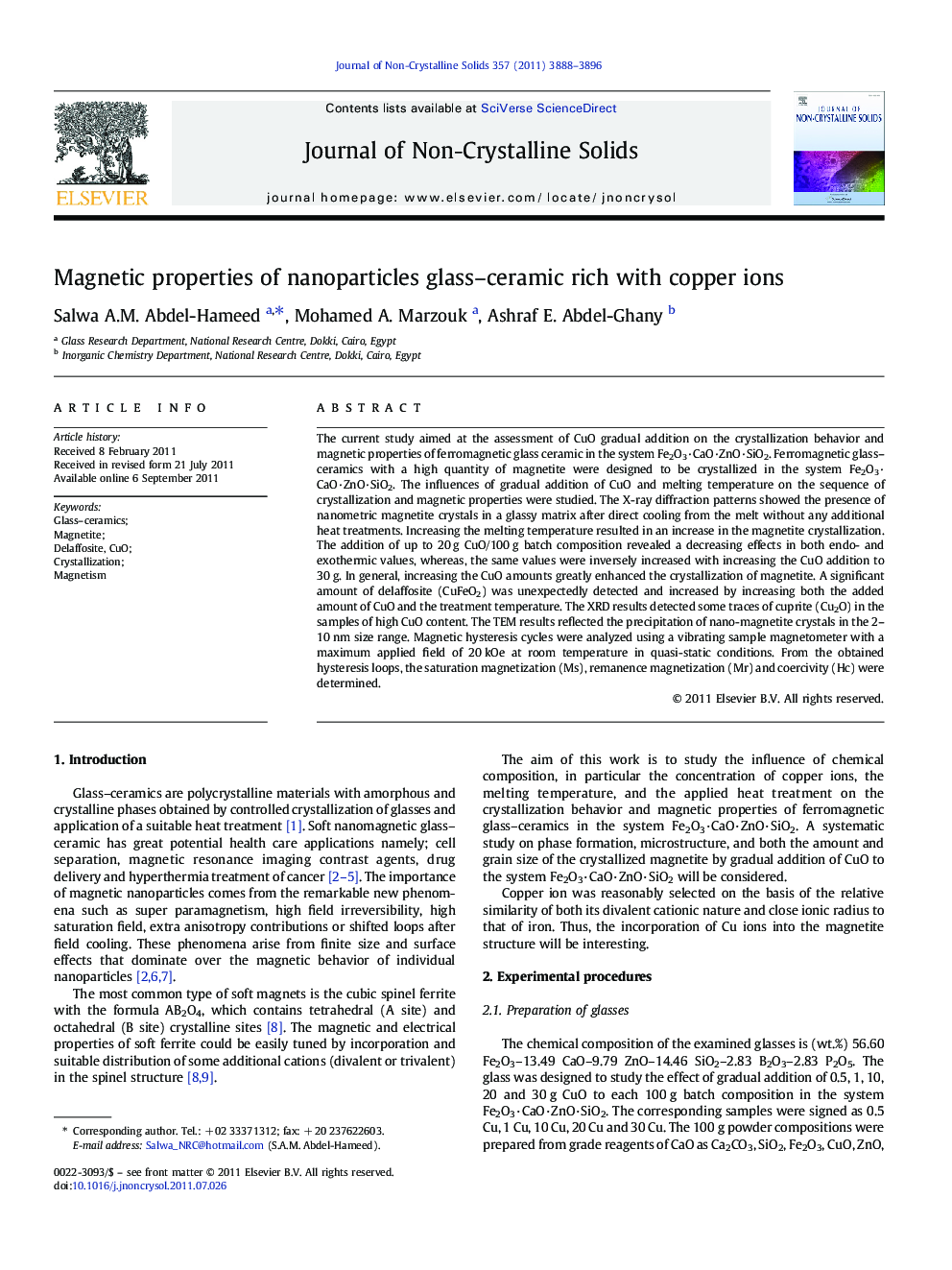| Article ID | Journal | Published Year | Pages | File Type |
|---|---|---|---|---|
| 1481829 | Journal of Non-Crystalline Solids | 2011 | 9 Pages |
The current study aimed at the assessment of CuO gradual addition on the crystallization behavior and magnetic properties of ferromagnetic glass ceramic in the system Fe2O3·CaO·ZnO·SiO2. Ferromagnetic glass–ceramics with a high quantity of magnetite were designed to be crystallized in the system Fe2O3·CaO·ZnO·SiO2. The influences of gradual addition of CuO and melting temperature on the sequence of crystallization and magnetic properties were studied. The X-ray diffraction patterns showed the presence of nanometric magnetite crystals in a glassy matrix after direct cooling from the melt without any additional heat treatments. Increasing the melting temperature resulted in an increase in the magnetite crystallization. The addition of up to 20 g CuO/100 g batch composition revealed a decreasing effects in both endo- and exothermic values, whereas, the same values were inversely increased with increasing the CuO addition to 30 g. In general, increasing the CuO amounts greatly enhanced the crystallization of magnetite. A significant amount of delaffosite (CuFeO2) was unexpectedly detected and increased by increasing both the added amount of CuO and the treatment temperature. The XRD results detected some traces of cuprite (Cu2O) in the samples of high CuO content. The TEM results reflected the precipitation of nano-magnetite crystals in the 2–10 nm size range. Magnetic hysteresis cycles were analyzed using a vibrating sample magnetometer with a maximum applied field of 20 kOe at room temperature in quasi-static conditions. From the obtained hysteresis loops, the saturation magnetization (Ms), remanence magnetization (Mr) and coercivity (Hc) were determined.
►Crystallization of Fe2O3·CaO·ZnO·SiO2 with CuO. ►Magnetite, cuprite and delaffosite. ►Nanomagnetite 2–10 nm.
